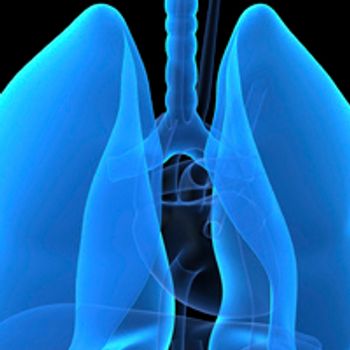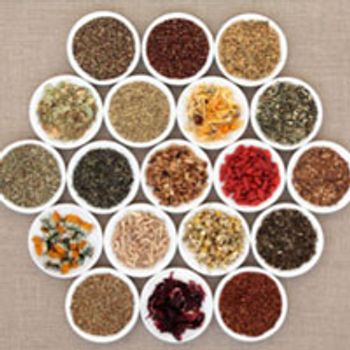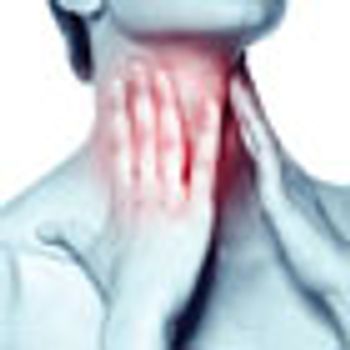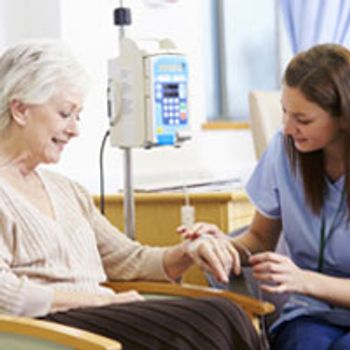
Chest radiation to treat a pediatric cancer is a well-known risk factor for getting breast cancer in adulthood, and research has now unearthed two specific genetic variants which may help to identify those survivors who are most at risk.

Chest radiation to treat a pediatric cancer is a well-known risk factor for getting breast cancer in adulthood, and research has now unearthed two specific genetic variants which may help to identify those survivors who are most at risk.


It’s known that hepatitis C virus (HCV) infection is associated with the development of liver cancer and non-Hodgkin lymphoma, but are there additional cancers that are associated with this virus?

The FDA has approved afatinib (Gilotrif) for the treatment of patients with advanced squamous cell non–small cell lung cancer (NSCLC) following progression on platinum-based chemotherapy.

Why do cancer patients need rehabilitation? It has been demonstrated that cancer survivors have poor physical health-related quality of life compared with age-matched controls.




How healthcare is delivered in the United States continues to rapidly and dramatically evolve, with legislative, budgetary, and demographic realities all coming into play. The nurse’s role has changed, too.

Being married may help extend survival among patients with cancer, and the benefit is largely unaffected by economic resources like health insurance, a finding which suggests that clinicians who treat unmarried patients with cancer should ask if there is someone within their social network available to help them physically and emotionally.

The Leapfrog Group (www.leapfroggroup.org) released its report Preventing Medication Errors in Hospitals April 7, which analyzed computerized physician order entry (CPOE) adoption and its ability to detect potentially harmful medication errors.

The FDA approved the BCL-2 inhibitor venetoclax (Venclexta) for patients with chronic lymphocytic leukemia who have a 17p deletion (del[17p]), following at least 1 prior therapy.

A team of researchers at Brigham and Women’s Hospital and the Dana-Farber Cancer Institute has discovered a set of 3 measurable risk factors that can help predict the magnitude of survival benefit offered by radiation therapy following breast-conserving surgery for ductal carcinoma in situ.

Bupivacaine liposome injectable suspension (Exparel) was found to be similarly effective in reducing pain compared with conventional bupivacaine HCL, but reduced ileus, nausea, and the need for patient-controlled analgesia and rescue IV opioid use.

Supplements are not regulated in the same way that prescription medications are regulated in the United States; consequently, the supplement market, which includes vitamins, probiotics, fish oils, etc, has greatly expanded over the past decade.

At the 2016 NCCN Annual Conference, William J. Gradishar, MD, a professor of Breast Oncology at the Feinberg School of Medicine at Northwestern University, discussed updates to the NCCN Breast Cancer Guideline and the latest research developments in the field.

The spotlight was on improving palliative cancer care at the opening session of the 2016 NCCN Annual Meeting, with a panel of experts stressing the importance of delivering these services earlier in the cancer care trajectory and involving teams in the effort.

A nomogram calculates the risk of ipsilateral breast tumor recurrence after breast-conserving surgery.



The FDA has approved a new agent for the treatment of severe hepatic veno-occlusive disease, a rare but often fatal complication in patients who receive chemotherapy and hematopoietic stem cell transplantation.

Research has identified a correlation between a diet with a high glycemic index and an increased risk of developing lung cancer in non-Hispanic whites.


Much work needs to be done to increase Lynch syndrome screening rates and better understand the factors that are associated with low testing rates.



The American Cancer Society has issued a new clinical practice guideline for the follow-up screening and care coordination for this population of survivors, who may experience significant physical, psychosocial, and practical effects from their cancer and its treatment.

A study published by researchers at the Dana Farber-Cancer Institute recently discovered that financial status plays a large role in the level of symptom burden and quality of life for patients newly diagnosed with lung or colorectal cancer.

Findings from a randomized trial reported at the 2016 Annual Meeting of the Society of Gynecologic Oncology showed that APF530, an extended-release formulation of the antiemetic granisetron, achieved a complete response more often than did ondansetron in patients receiving highly emetogenic cisplatin-based chemotherapy.

Pregnant and diagnosed with cervical cancer at age 27, I chose treatment and my daughter and I survived what experts said would kill us.